Kenshin Do Karate Wado Kai
Wado Ryu, which means Peaceful Way School was one of the four styles of karate originally registered with the Dai Nippon Butokukai in 1938. Initially named 'Shinshu Wadoryu Karate-Jujutsu', Wado Ryu is a combination of Okinawan karate and Japanese classical Bujutsu (in particular, Shindo Yoshinryu Jujitsu). It was founded by a Japanese jujutsu master, Otsuka Hironori, who was impressed by the power of Funakoshi's Shotokan karate, but thought that much of its movements and striking were inefficient.
As a style of karate, Wado Ryu is 'lighter' than Shotokan, incorporating movement and strategy from Jujitsu and Kenjutsu. From Okinawan karate come the striking techniques, and from Jujitsu and Kenjutsu the use of body movement, joint-locks, pins & throws
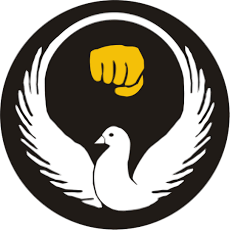
Master Otsuka developed a relaxed-arm thrust punch coupled with a snap-withdrawal of the punching fist, to create a highly focussed technique which he saw as more 'economical' than other styles of karate, with all the energy concentrated solely in the strike.
The karate section of the honbu dojo was the first to be established, back in 1988, although Sensei Dart had been running his own clubs since 1983 within other organisations. In 1998 the Kenshin Do Karate Wadokai was accepted into membership of the Wadokai England Karatedo Federation, affiliated to the Japan Karate Federation (Wadokai), where Sensei Dart was subsequently appointed as General Secretary of the Federation in 1999-2000. Membership lapsed in January 2009 as Wadokai England's focus changed to competition karate and in 2012 Kenshin Do Karate Wado Kai joined the English Wado Federation, leaving and setting up the English Wadoryu Bujutsu Kyokai in 2020.
The Kenshindoryu syllabus was originally based on Mr Suzuki's UKKW grading requirements but various changes have taken place over the years in relation to pair techniques and kata interpretation resulting in the current syllabus which reflects the influence of the late Shinohara Y. Sensei from the British Wadoryu Karatedo Shikukai,
a long-time supporter and mentor, and our Chief Instructor's focus on jujutsu and aikijutsu applications from kata (ohyo kata).
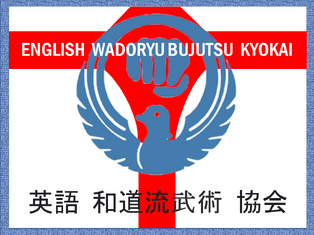
The English Wadoryu Bujutsu Kyokai was established to maintain focus on the core elements that make up the traditional Wado Ryu syllabus (kihon, kumite, Kihon Gumite, the core 9 kata prior to dan grade and accepted 6 advanced kata), but with increased importance on sympathetic (i.e. Jujutsu and aikijutsu-based), modern and usable self-defence applications to kata that reinforce the kaisetsu (principles) of the style and the value that kata practice brings to karate.
Ohyo kata is a major emphasis within Kenshindoryu clubs and students will be provided with effective applications for all kata in the syllabus, including throwing, locking, vital & pressure-point applications. However, in keeping with the close-range nature of Wadoryu in Kenshindoryu clubs, these applications tend towards grappling and close-quarter striking techniques.
The syllabus also includes Ukemiwaza (breakfalls) and Kumikata (forms of gripping) to enable seamless transition into the kata locking and throwing techniques, without sacrificing any of the traditional skills of taisabaki, irimi, noru, inasu and nagasu, which have been enhanced by inclusion of three taisabaki exercises utising the strategies and movements of Iaido and Battojustu (sword training).
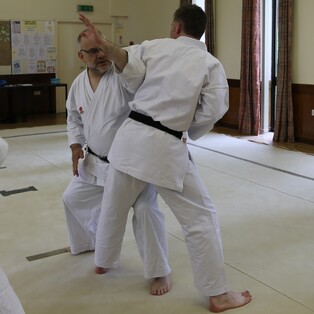
"Ohtsuka Sensei says that if Wado Karate was a soup, then the Karate part of Wado would just be like a pinch of salt!" Yoshihiko Iwasaki
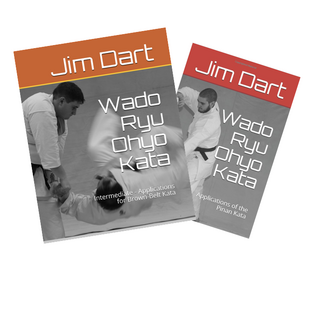
"Wado Kata and Kihon must be capable of becoming typical Jujitsu movements and techniques."
Yoshihiko Iwasaki
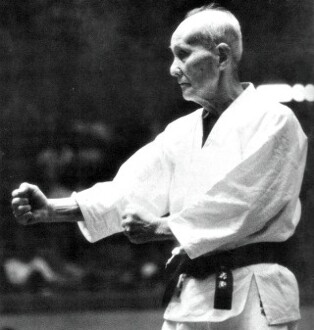
Above: Otsuke H. Meijin - Founder of Wadoryu
"Jujitsu-Ka and Wado-ka should understand the principles of Kenjutsu and be able to use a sword effectively."
Yoshihiko Iwasaki
Ohyo Kata
When we practice kata we do so with applications in mind to keep the kata 'alive' and relevant.
And although we have allocated specific techniques to give the movements real meaning, that doesn't mean that they are the only interpretations, nor that they are the 'original' intent.
In fact, as the kata are derived from Okinawan Karate, our applications will almost certainly NOT be the meaning as originally practiced, as Otsuka Sensei changed the kata (as he had performed them in Funakoshi's Shotokan) to better suit his style and jujutsu background.
Our efforts to keep kata meaningful and worthwhile from a fighting perspective involves using them as a mnemonic for techniques, as they were originally designed, and our 'rules' for interpreting the movements are summarised below.
